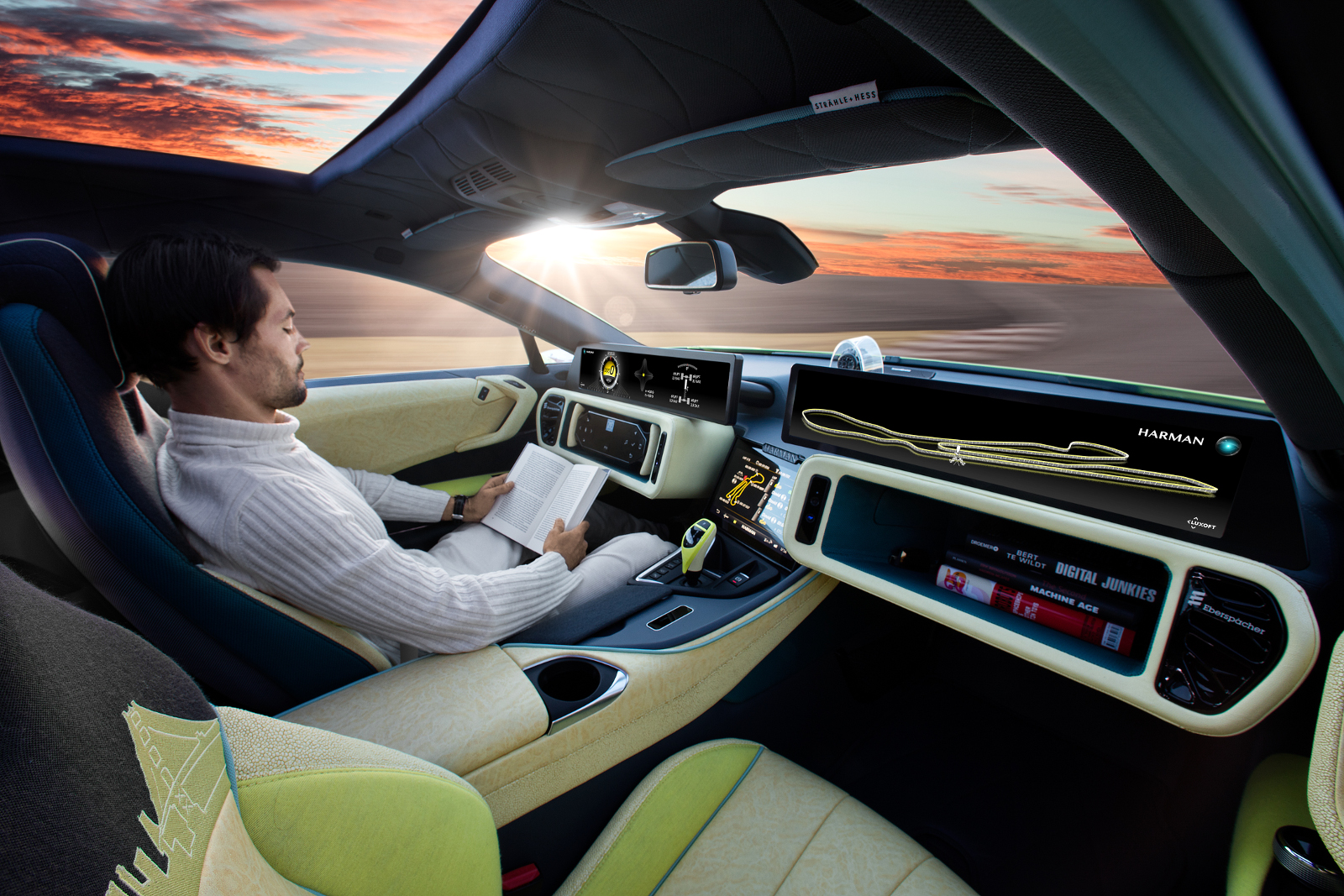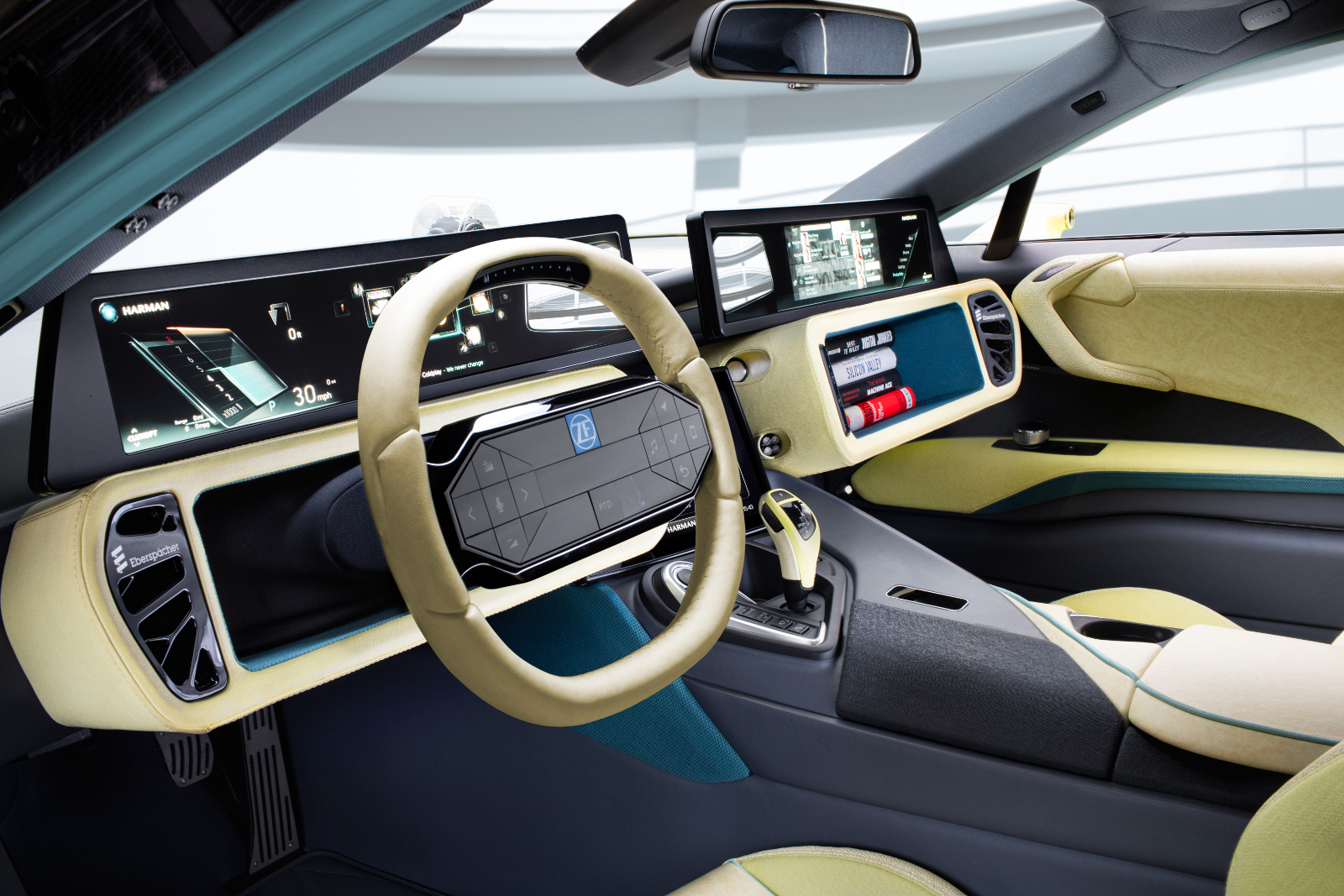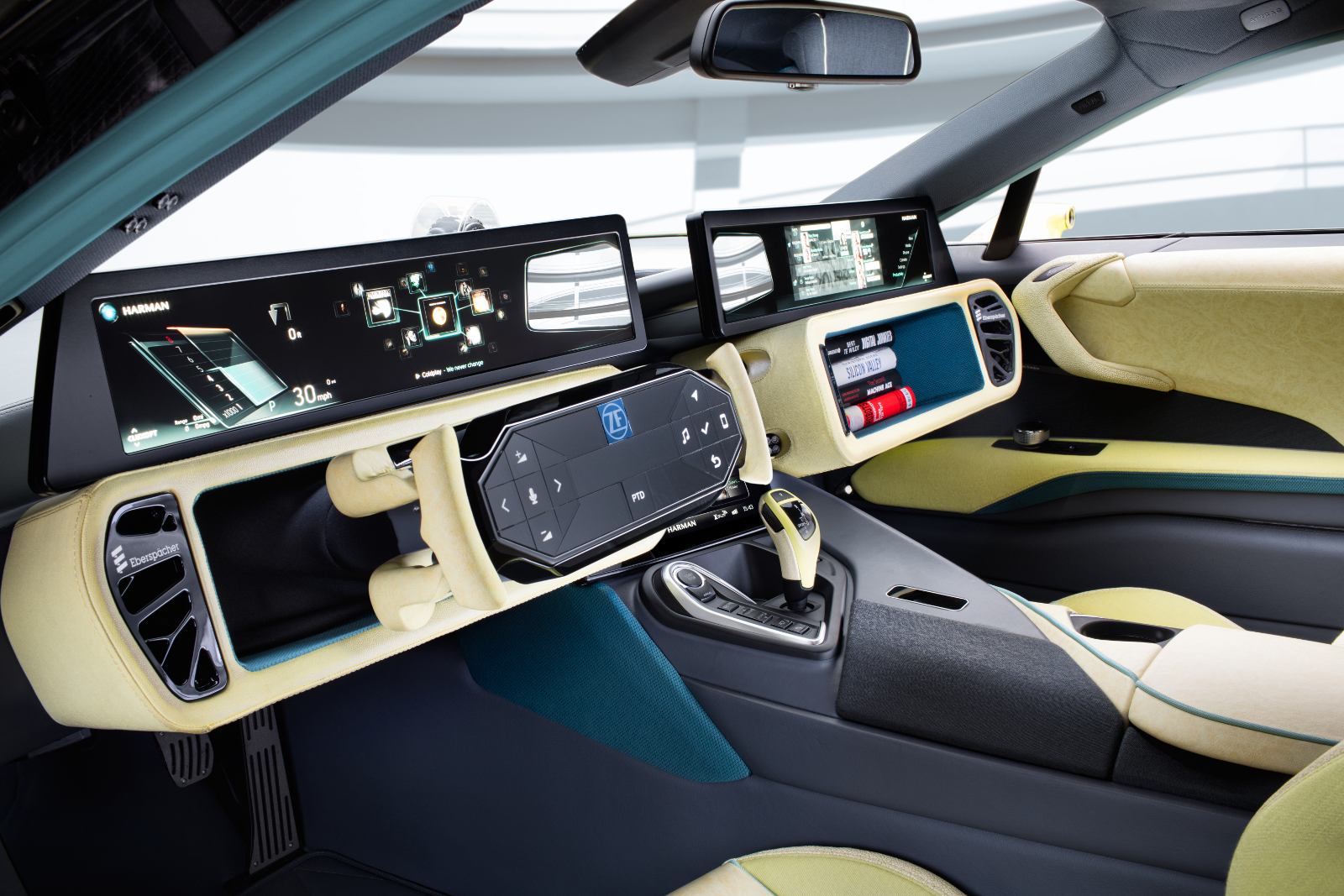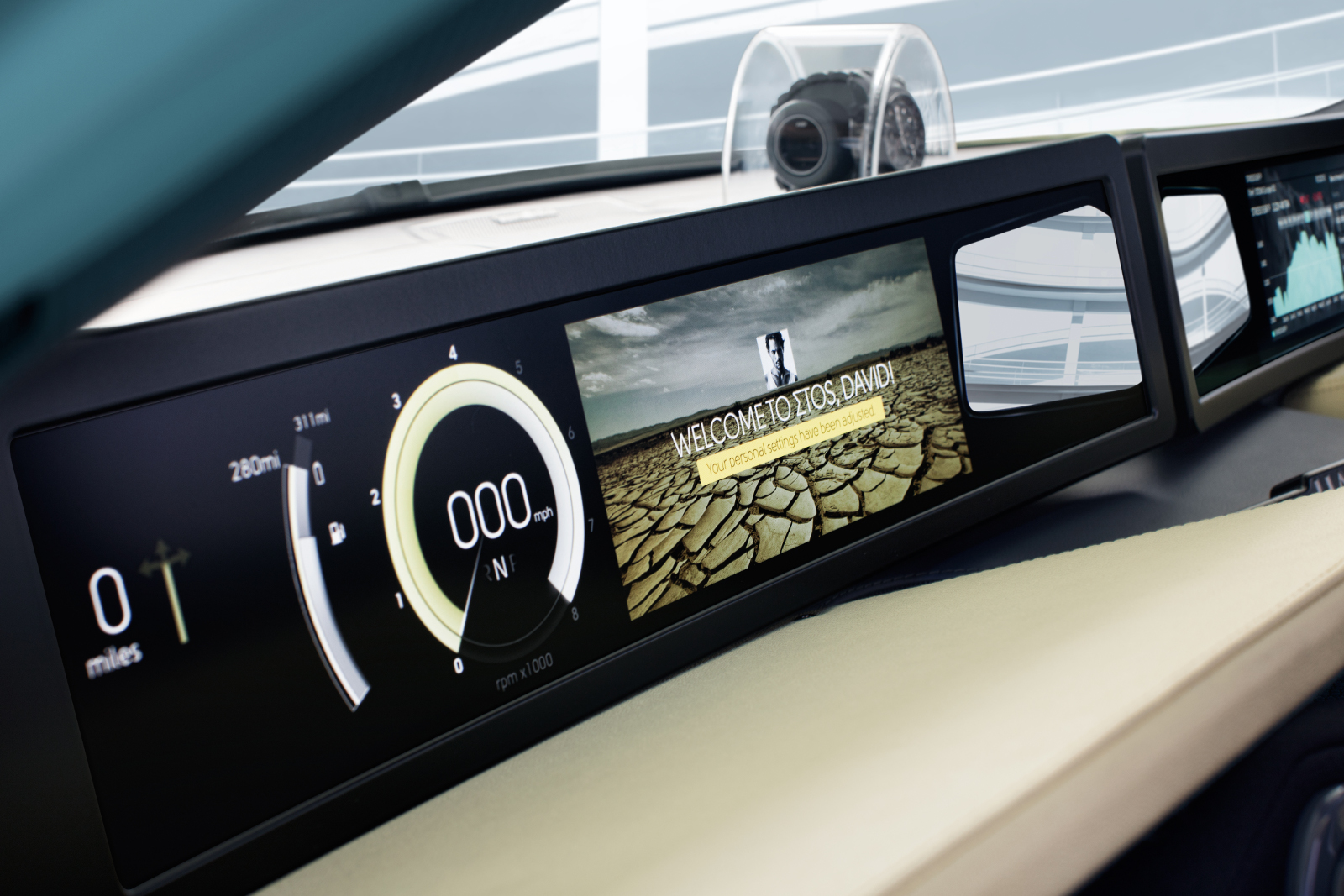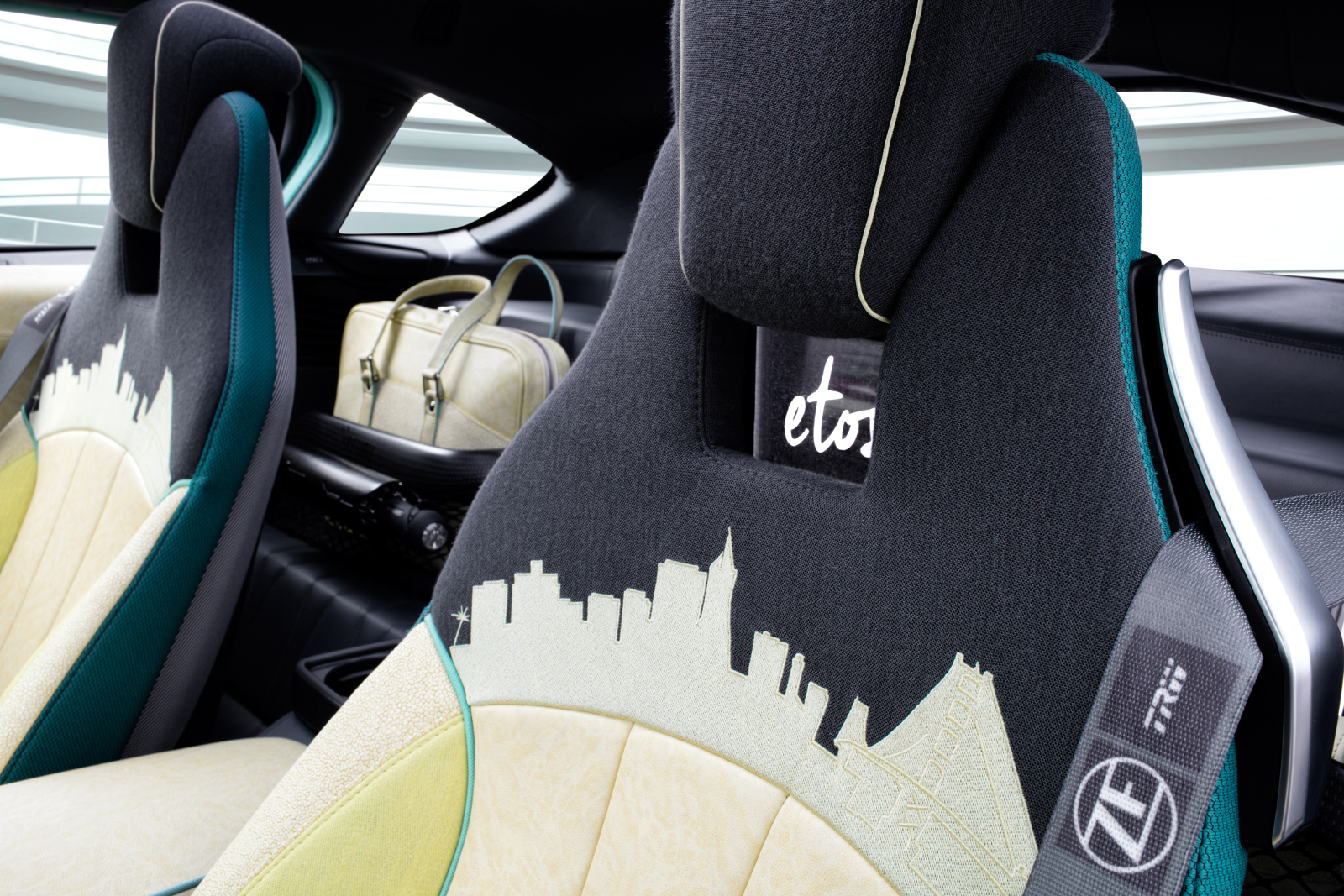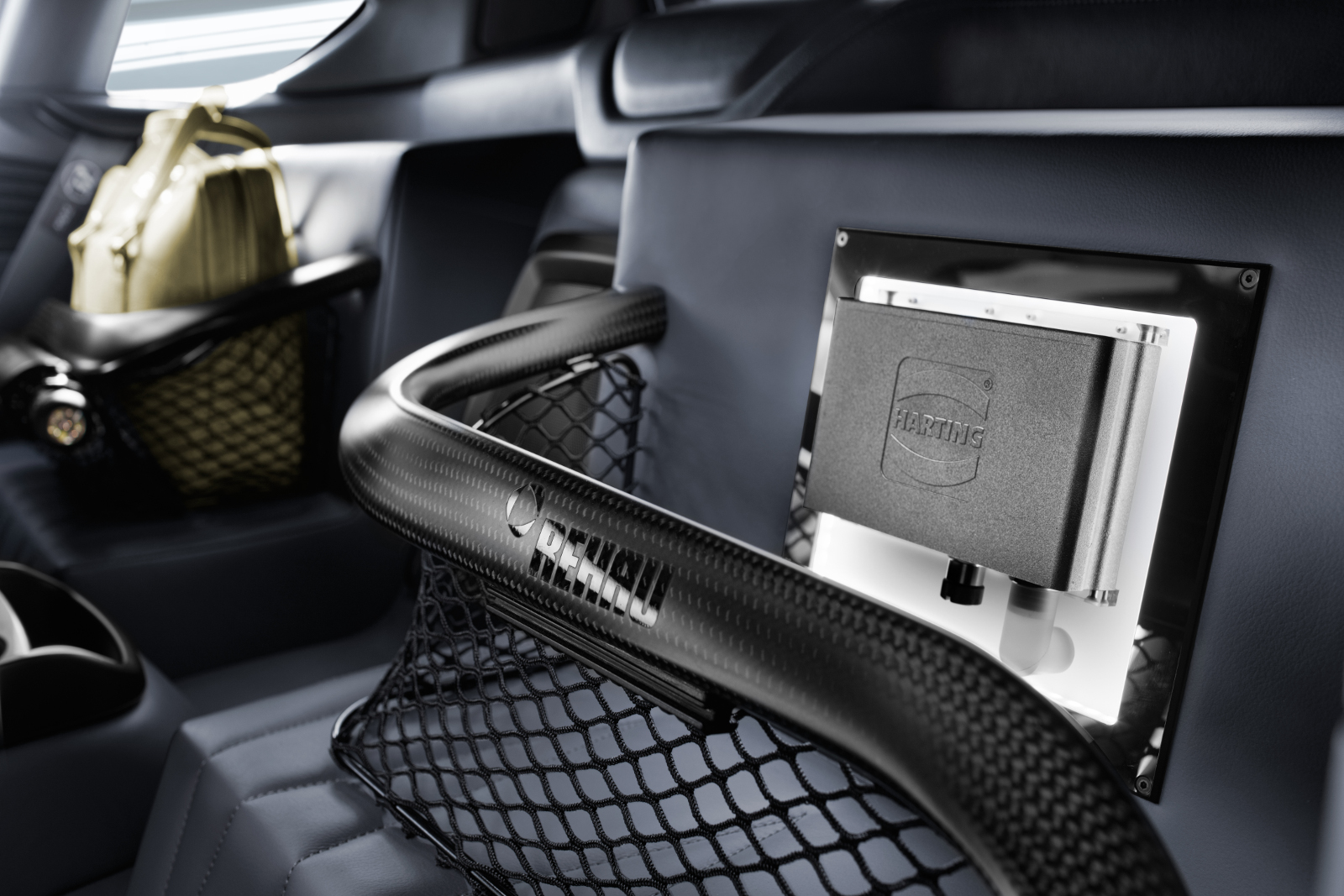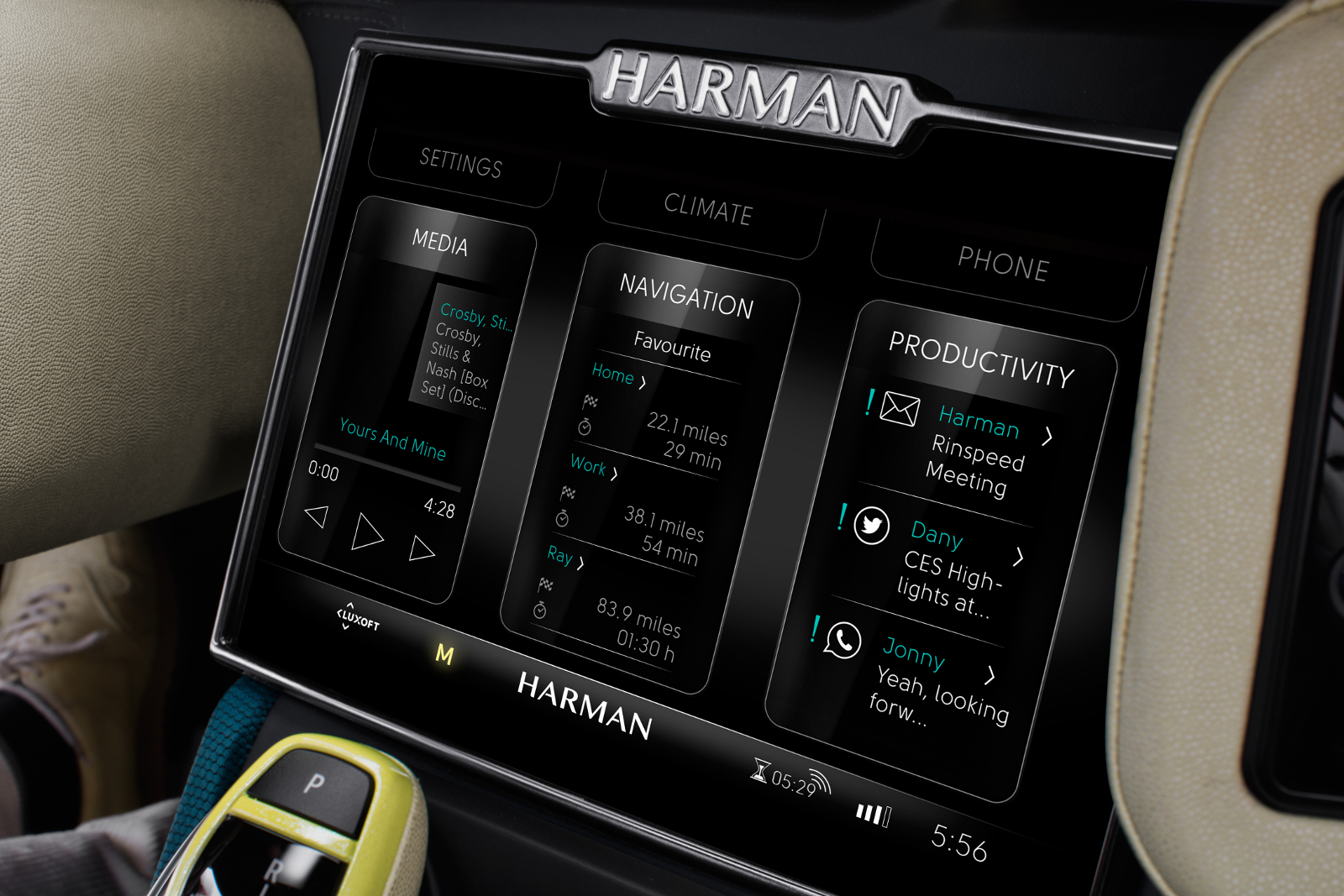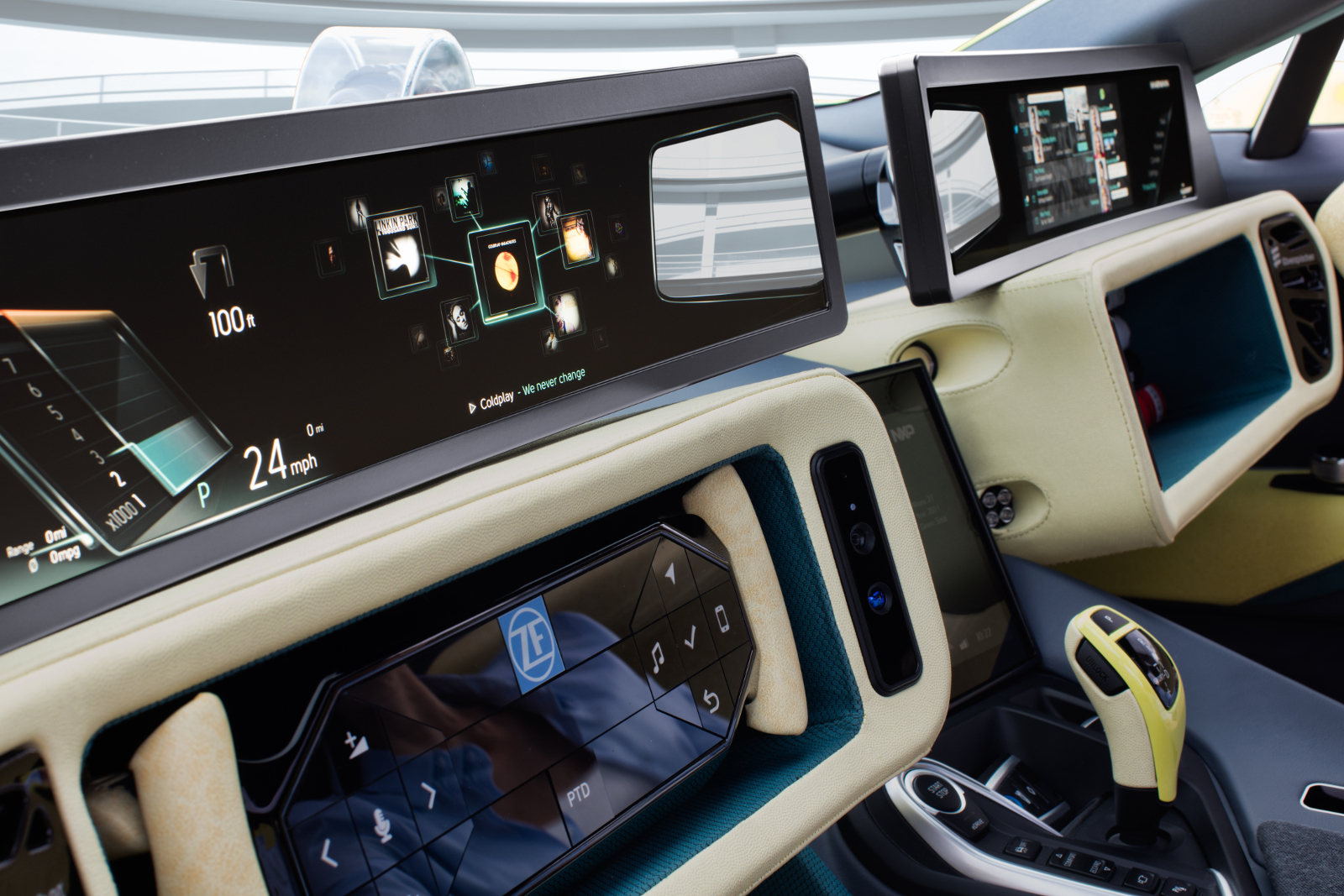If we were to reach into the fabric of spacetime and pull out a car from the year 2050, it might very well resemble the lemon-shaded concept you see above. Dubbed the Etos (Σtos), the vehicle comes from Swiss think tank and mobility lab Rinspeed, a group known for building zero-emission aquatic cars, robot-driven EVs, and shape-shifting, smartphone-controlled people carriers.
What makes the Etos so progressive? Underneath the custom bodywork lie the carbon fiber and aluminum bones of the BMW i8 — a forward-thinking plug-in hybrid in its own right — and yet the i8 only serves as the starting point for the Etos. To create something even more special, Rinspeed had to go deeper.
The Etos features a fully autonomous mode bolstered by eight HD exterior cameras that constantly track all surrounding objects and people. It automatically links to and communicates with city infrastructure and other vehicles to anticipate slowdowns, and will even monitor cell reception levels to notify occupants of impending dead zones.
If the passenger decides to take the wheel — which electronically extends out of the dashboard to greet the lucky occupant — the vehicle’s gaze-tracking system monitors the occupant’s eyes to reduce redundant alerts and increase safety. Oh, and the Etos comes with its own personalized drone, which can peel off from the vehicle to pick up a bouquet of flowers or take what are likely the best selfies of all time from the air. Once such errands are completed, it returns to its integrated landing platform, which consists of 12,000 individually-controlled LEDs that can also be used as a message board.
Convinced yet?
Inside, the Etos is equipped with two curved 21.5-inch Ultra HD widescreen monitors that serve as the gateway between the occupants and the Harman Connected Car infotainment suite. The technology acts like a courteous personal assistant, anticipating the needs and wants of the people inside while also providing “perfect entertainment.” Even better, the system learns as it goes, predicting appointments, adapting to personal preferences, and reducing the amount of manual entries the driver must input. If you must be bothered with entering in an address or changing a preference, you can do so with touch, voice, or gesture controls.
The word “futuristic” gets thrown around a lot in the automotive community, but considering the fact that our cars resemble rolling smartphones more and more every year, its usage is appropriate. With the Etos concept though, futuristic is the perfect description, as it portrays the direction the world of cars is going more accurately than just about anything else on the road. Inside its sleek, otherworldly embrace, the future is now.
The Etos concept celebrates its world premiere at CES 2016 on January 5.
